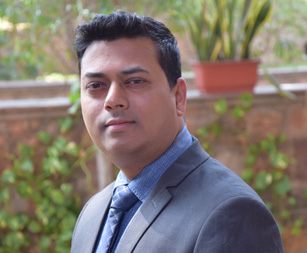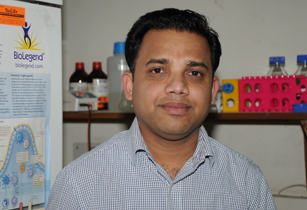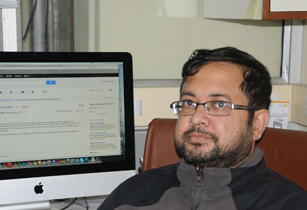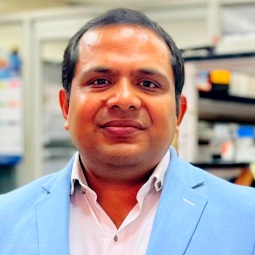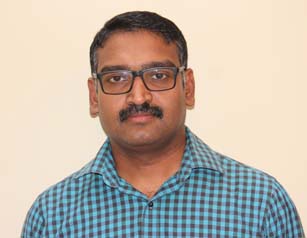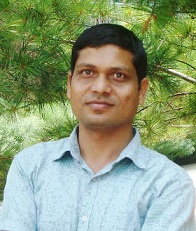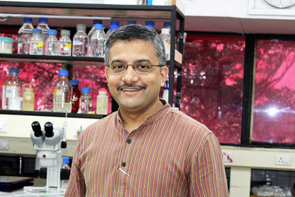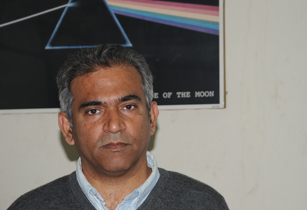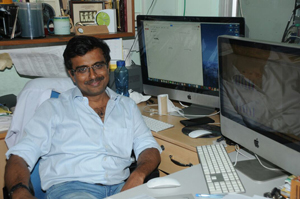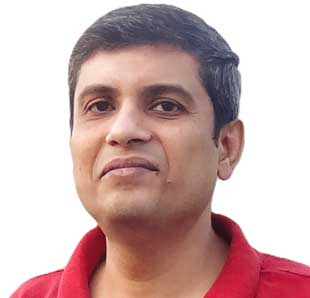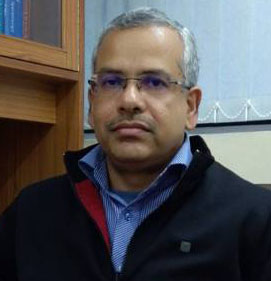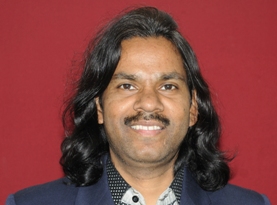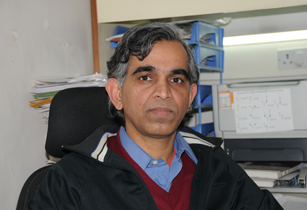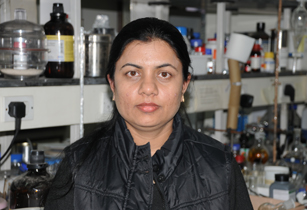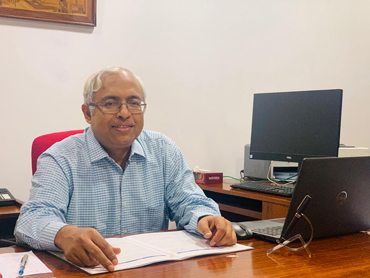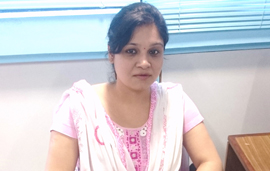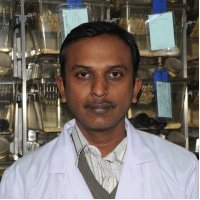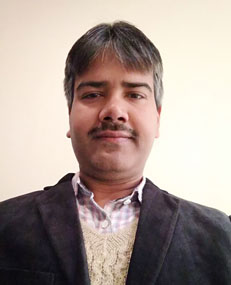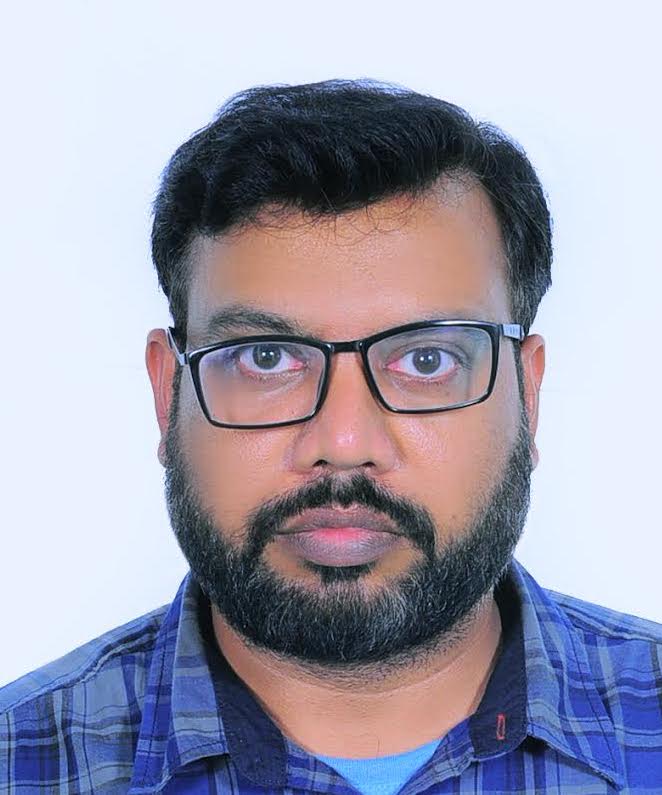Dr. Santiswarup Singha
Application of nano-engineering principles for rational designing of the immunomodulatory nano-therapeutic platform.
Our laboratory focuses on developing nanotechnology-based immunotherapeutic platforms for cancer. A major challenge in cancer immunotherapy is T-cell-mediated suboptimal immune responses due to compromised presentation of tumor-associated antigens (TAAs) by professional antigen-presenting cells (APCs) and tumor cells. To address this, we design nanoscale artificial antigen-presenting cells (aAPCs) that display peptide-MHCs along with co-stimulatory molecules and immune checkpoint inhibitors to efficiently expand antigen-specific T-cells, to promote their infiltration into the solid tumor. Furthermore, we formulate nano-delivery systems to enhance TAA presentation by professional APCs to induce an efficient anti-tumor immune network. Additionally, we reprogram tumor cells by modulating the activity of chaperone network to present TAAs in the context of MHC-I, thereby strengthening the effectiveness of the immunotherapeutic approaches. We consider the multidisciplinary approaches integrating nanotechnology, protein biochemistry, and tumor immunology to study the complex immunological responses against cancer for rational designing of the nanotherapeutic platform.
Ph.D. Students : Khushboo Chaudhary, Arnab Kumar Sahoo, Antara Mondal, Faisal Jamal, Sarmili Chowdhury, Vasu Sharma, and Vinesh N
Project Students : Arpita Das (ICMR project), Aakriti Jha (ICMR Project)
Technical Support : Raghav Ram Yadav and Rajit Ram.
Awards:
• Ramalingaswami Re-entry Fellowship 2020-2021 of the Department of Biotechnology (DBT), Govt. of India.
Funding:
Indian Council of Medical Research (ICMR)
Ramalingaswami Fellowship (DBT)
Patents:
(1) Singha S, Dasgupta AK. Light Energy Induced Stability of Biomaterials.(Pub. No. US 2011/0250670 A1, Pub. Date: Oct, 13,2011) (PCT/IB2010/001373)
- Sahoo, A.K.;* Mondal, A.;*, Jamal, F.; Das, A.; Chaudhary, K.; Jha, A.; Bansal, T. S.; Mandal, P.; Dhara A. K.; Yang. Y.; Singha, S.,# Defining the Critical Valency of Peptide-MHC on Nanoscale Artificial Antigen Presenting Cells for Expanding Endogenous Tumor-Specific T-cells In Vivo. Nano Letters 2025, 25(27):10817-10825.
- Mondal, A.; Jamal, F.; Das, A.; Sahoo, A. K.; Chaudhary. K.; Chowdhury. S.; Jha. A.; Singha. S.,# Inhibition of Melanoma Growth by Ex Vivo Expanded Tumor-Specific CD8+ T Cells Is Dependent on the Configuration of Nanoscale Artificial APCs. European Journal of Immunology 2025, 55(5):e202451676.
- Yang, Y.; Ellestad, K. K.; Singha, S.; Uddin, M. M.; Clarke, R.; Mondal, D.; Garabatos, N.; Sole, P.; Fandos, C.; Serra, P.; Santamaria, P., Extremely short bioavailability and fast pharmacodynamic effects of pMHC-based nanomedicines. J Control Release. 2021,338, 557-570.
- Umeshappa, C. S.; Mbongue, J.; Singha, S.; Mohapatra, S.; Yamanouchi, J.; Lee, J. A.; Nanjundappa, R. H.; Shao, K.; Christen, U.; Yang, Y.; Ellestad, K. K.; Santamaria, P., Ubiquitous antigen-specific T regulatory type 1 cells variably suppress hepatic and extrahepatic autoimmunity. J Clin Invest. 2020, 130 (4), 1823-1829.
- Serra, P.; Garabatos, N.; Singha, S.; Fandos, C.; Garnica, J.; Sole, P.; Parras, D.; Yamanouchi, J.; Blanco, J.; Tort, M.; Ortega, M.; Yang, Y.; Ellestad, K. K.; Santamaria, P., Increased yields and biological potency of knob-into-hole-based soluble MHC class II molecules. Nat Commun2019,10 (1), 4917.
- Umeshappa, C. S.; Singha, S.; Blanco, J.; Shao, K.; Nanjundappa, R. H.; Yamanouchi, J.; Pares, A.; Serra, P.; Yang, Y.; Santamaria, P., Suppression of a broad spectrum of liver autoimmune pathologies by single peptide-MHC-based nanomedicines. Nat Commun2019,10 (1), 2150.
- Singha, S.*; Shao, K.*; Ellestad, K. K.; Yang, Y.; Santamaria, P., Nanoparticles for Immune Stimulation Against Infection, Cancer, and Autoimmunity. ACS Nano2018,12 (11), 10621-10635.
- Mukhopadhyay, A.; Basu, S.; Singha, S.; Patra, H. K., Inner-View of Nanomaterial Incited Protein Conformational Changes: Insights into Designable Interaction. Research (Wash D C)2018, 2018, 9712832.
- Singha, S.*; Shao, K.*; Yang, Y.; Clemente-Casares, X.; Sole, P.; Clemente, A.; Blanco, J.; Dai, Q.; Song, F.; Liu, S. W.; Yamanouchi, J.; Umeshappa, C. S.; Nanjundappa, R. H.; Detampel, P.; Amrein, M.; Fandos, C.; Tanguay, R.; Newbigging, S.; Serra, P.; Khadra, A.; Chan, W. C. W.; Santamaria, P., Peptide-MHC-based nanomedicines for autoimmunity function as T-cell receptor microclustering devices. Nat Nanotechnol2017,12 (7), 701-710. Highlighted in Science Translational Medicine and Nature Reviews Materials
- Clemente-Casares, X.; Blanco, J.*; Ambalavanan, P.*; Yamanouchi, J.*; Singha, S.*; Fandos, C.; Tsai, S.; Wang, J.; Garabatos, N.; Izquierdo, C.; Agrawal, S.; Keough, M. B.; Yong, V. W.; James, E.; Moore, A.; Yang, Y.; Stratmann, T.; Serra, P.; Santamaria, P., Expanding antigen-specific regulatory networks to treat autoimmunity. Nature2016, 530 (7591), 434-40. Highlighted in The New EnglandJournalof Medicine, Nature-Biotechnology and Nature Reviews Drug Discovery.
- Shao, K.*; Singha, S.*; Clemente-Casares, X.; Tsai, S.; Yang, Y.; Santamaria, P., Nanoparticle-based immunotherapy for cancer. ACS Nano2015,9 (1), 16-30.
- Ray, N.; Roy, S.; Singha, S.; Chandra, B.; Dasgupta, A. K.; Sarkar, A., Design of heat shock-resistant surfaces to prevent protein aggregation: Enhanced chaperone activity of immobilized alpha-Crystallin. Bioconjug Chem2014,25 (5), 888-95.
- Singha, S.; Dasgupta, A. K.; Datta, H., Gold nanoparticle induces masking of amines and some therapeutic implications. J Nanosci Nanotechnol2011,11 (9), 7744-52.
- Singha, S.; Datta, H.; Dasgupta, A. K., Size dependent chaperon properties of gold nanoparticles. J Nanosci Nanotechnol2010,10 (2), 826-32.
- Singha, S.; Bhattacharya, J.; Datta, H.; Dasgupta, A. K., Anti-glycation activity of gold nanoparticles. Nanomedicine NBM2009,5 (1), 21-9.
- Singha S.;Lahiri T.; Dasgupta AK.; Chakrabarti P., Structural Classification of Protein Using Surface Roughness Index.Online Journal of Bioinformatics 2006, 7 (2), 74-84
- Roy, S.; Singha, S.; Bhattacharya, J.; Ghoshmoulick, R.; Dasgupta, A. K., A size dependent folding contour for cytochrome C. Biophys Chem2006,119 (1), 14-22.
* Equal Contribution
# Corresponding author



